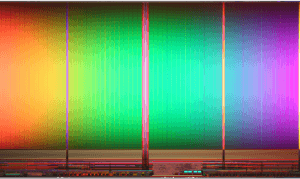Planar NAND is Dead - Long Live Planar NAND
First, planar NAND is the NAND flash chips everyone has been familiar with for a couple decades.They are either SLC, MLC or TLC based NAND and sold in wafer/die, TSOP, BGA and other common semiconductor packages.
Over the last two decades, the capacity of the planar NAND die increased by shrinking the trace widths of the semiconductor manufacturing process. It’s gone in many steps from 120nm down to 15nm today.
Historically, to meet a high capacity requirement, multiple planar NAND die were stacked on top of each other with an insulating layer between them. Once mounted, these separate NAND die were wire bonded together and then to the substrate or lead frame depending on the package type.
What is 3D NAND?
New 3D NAND technology promises more capacity, speed, endurance and power efficiency than planar NAND. Starting at 24 layers and moving quickly to 32,48 and 100 layers of NAND stacked vertically on a single die, 3D NAND is significantly denser than planar NAND. For this reason, Samsung calls this V-NAND for Vertical NAND.
3D NAND manufacturers are also moving rapidly to the lowest cost TLC technology in their stacked 3D designs. While there is some improvement in endurance with the 3D technology, the TLC technology is not nearly as reliable as planar SLC or even MLC NAND.
A single 3D die can have memory capacity as high as 1 Terabit (128 Gbytes).Similar to planar NAND, multiple 3D NAND components can be stacked in a component package to gain capacities as high as 1 Terabyte in a single 3D NAND BGA component for example.
Why Will Planar NAND Continue to Thrive?
 For most embedded OEM applications, not a huge amount of storage is required. In many cases, 4 Gbytes can meet the needs for a relatively small embedded Operating System, the application and data storage.
For most embedded OEM applications, not a huge amount of storage is required. In many cases, 4 Gbytes can meet the needs for a relatively small embedded Operating System, the application and data storage.
With 3D NAND focused on very high capacities, it is also expensive from an absolute dollar cost point of view. Planar NAND in the SLC and MLC varieties will continue to support capacity requirements as low as 128 Mbytes. It will always have a better absolute cost because it is much lower capacity and requires less process steps to manufacture.
At Cactus Technologies, Embedded OEMs are our focus. Our SLC Compact Flash and Industrial microSD have been and continue to be widely used in embedded applications worldwide.
If you have an embedded OEM application and would like more info, please contact a Cactus Technologies’ Expert.






